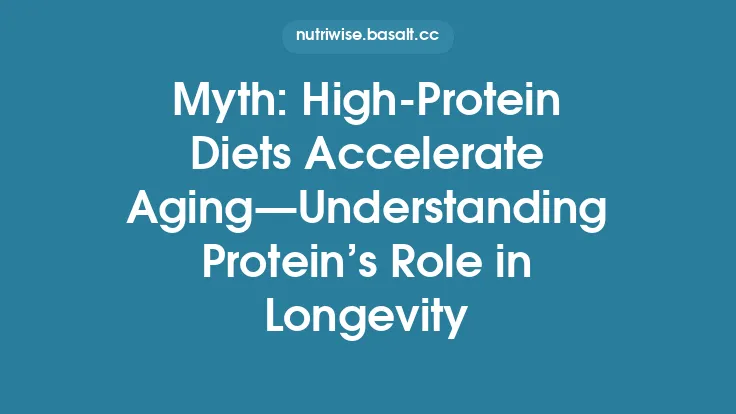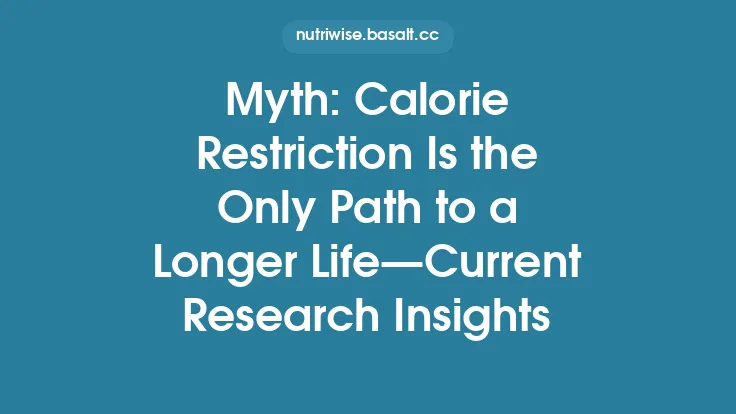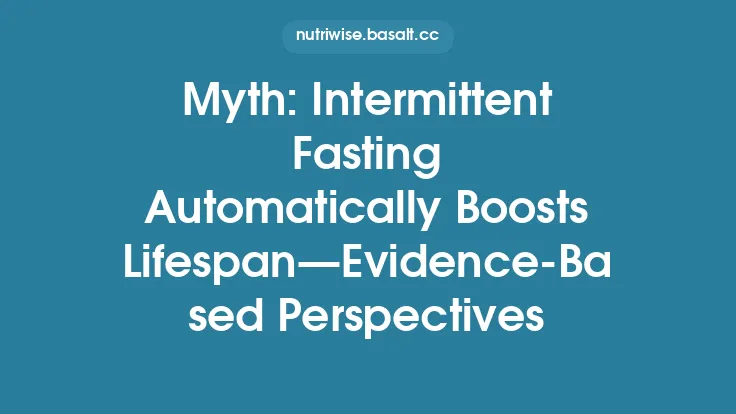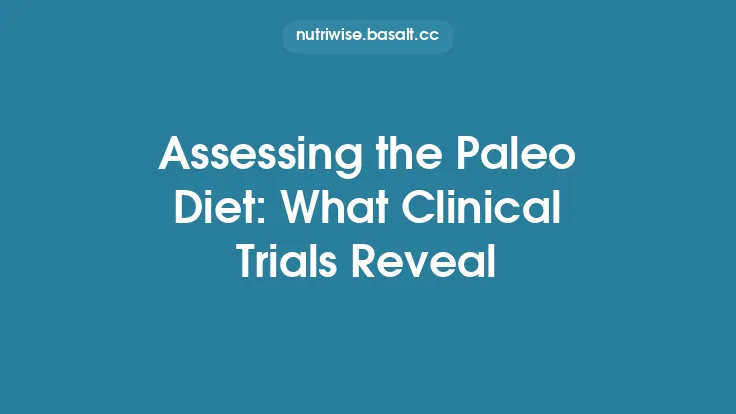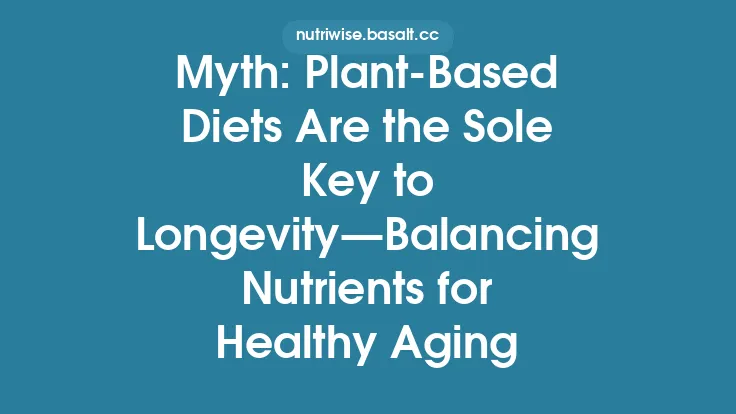Red meat has long occupied a polarizing spot on the nutrition table, often portrayed in headlines as a dietary villain that shortens lifespan. The narrative is compelling: âEat more steak, and youâll die sooner.â Yet the reality emerging from decades of prospective cohort studies, randomized trials, and mechanistic research paints a far more nuanced picture. This article dissects the evidence, clarifies common misconceptions, and outlines what the longestârunning investigations actually tell us about red meat, health, and longevity.
The Historical Context of the RedâMeat Debate
The suspicion surrounding red meat dates back to the 1970s, when epidemiologists first linked saturated fat intake to coronary heart disease. Because beef, lamb, and pork are major sources of saturated fat, they became convenient targets for publicâhealth messaging. In the 1990s, the emergence of the âWestern dietâ conceptâhigh in processed meats, refined grains, and sugary beveragesâfurther cemented the idea that red meat was a primary driver of chronic disease.
However, the term âred meatâ encompasses a spectrum of foods, from lean, grassâfed beef to heavily processed sausages. Over time, researchers have refined their definitions, distinguishing unprocessed red meat (e.g., fresh steak, pork chops) from processed red meat (e.g., bacon, salami, hot dogs). This distinction is crucial because the health impacts of these subâcategories differ markedly.
What LongâTerm Cohort Studies Reveal
1. LargeâScale Prospective Cohorts
- The Nursesâ Health Study (NHS) and Health Professionals Followâup Study (HPFS) â Over 30 years of followâup, these U.S. cohorts have collected detailed dietary data from more than 200,000 participants. Analyses consistently show that high consumption of processed red meat (âĽ5 servings/week) is associated with a modest increase in allâcause mortality (hazard ratios â1.15â1.20). In contrast, unprocessed red meat shows either a null association or a very slight, nonâsignificant trend toward higher risk.
- European Prospective Investigation into Cancer and Nutrition (EPIC) â Encompassing 10 countries and >500,000 participants, EPIC provides a geographically diverse perspective. The EPIC data reveal that processed meat intake correlates with higher cardiovascular and colorectal cancer mortality, while unprocessed red meat does not exhibit a clear doseâresponse relationship with overall mortality after adjusting for lifestyle factors.
- The China Health and Nutrition Survey (CHNS) â In a population with traditionally lower meat consumption, a gradual increase in red meat intake over the past two decades has not translated into a proportional rise in mortality. Instead, the data suggest that overall dietary pattern (e.g., fruit, vegetable, and wholeâgrain intake) moderates any potential risk from red meat.
2. MetaâAnalyses of Cohort Data
Recent metaâanalyses pooling data from >1.5 million participants provide a broader view:
- Processed vs. Unprocessed â A 2022 metaâanalysis of 20 prospective studies found a 22% higher risk of cardiovascular disease (CVD) mortality for the highest versus lowest quintile of processed meat intake (RRâŻ=âŻ1.22, 95%âŻCIâŻ1.12â1.33). The same analysis reported a nonâsignificant 5% increase for unprocessed red meat (RRâŻ=âŻ1.05, 95%âŻCIâŻ0.98â1.12).
- DoseâResponse Relationships â Incremental risk appears linear for processed meat (â18% increase per 50âŻg/day) but flat for unprocessed meat up to ~100âŻg/day.
These findings underscore that the type of red meatâand not red meat per seâis the primary driver of any observed mortality signal.
Mechanistic Insights: Why Processed Meat Is Riskier
- Nitrites and Nânitroso Compounds â Curing agents (e.g., sodium nitrite) used in processing can form carcinogenic Nânitroso compounds during digestion, especially in the acidic environment of the stomach.
- High Sodium Content â Processed meats often contain >500âŻmg of sodium per 50âŻg serving, contributing to hypertension, a major CVD risk factor.
- Advanced Glycation EndâProducts (AGEs) â Highâtemperature cooking and processing generate AGEs, which promote oxidative stress and inflammation.
- Preservatives and Additives â Phosphates, smoke flavorings, and other additives can affect lipid metabolism and endothelial function.
In contrast, unprocessed red meat provides highâquality protein, heme iron, zinc, vitamin B12, and creatineânutrients essential for muscle maintenance, oxygen transport, and cellular energy, especially in older adults.
The Role of Cooking Methods
Even unprocessed red meat can become a health concern when prepared with certain techniques:
- Grilling, Barbecuing, and PanâFrying at High Temperatures â These methods produce heterocyclic amines (HCAs) and polycyclic aromatic hydrocarbons (PAHs), both mutagenic compounds linked to colorectal cancer in animal models.
- Mitigation Strategies â Marinating meat in antioxidantârich mixtures (e.g., rosemary, garlic, citrus), using lower cooking temperatures, and avoiding charring can reduce HCA/PAH formation by up to 50%.
Thus, the culinary context matters as much as the meatâs processing status.
Confounding Variables and the Challenge of Causality
Observational studies, even with sophisticated statistical adjustments, cannot fully eliminate confounding. Common confounders include:
- Overall Dietary Pattern â High redâmeat consumers often have lower intakes of fruits, vegetables, and fiber, which independently affect mortality.
- Lifestyle Factors â Smoking, physical inactivity, and socioeconomic status correlate with meat consumption patterns.
- Genetic Predispositions â Variants in genes related to lipid metabolism (e.g., APOE) may modulate individual responses to saturated fat.
Randomized controlled trials (RCTs) provide stronger causal evidence but are limited in duration and scale for mortality outcomes. The PREDIMEDâPlus trial, a Mediterraneanâstyle diet intervention that included modest redâmeat consumption, demonstrated reduced cardiovascular events over 5 years, suggesting that moderate intake within a balanced diet does not impair longevity.
Balancing Risks and Benefits: Practical Recommendations
- Prioritize Unprocessed Over Processed â Choose fresh cuts of beef, lamb, or pork rather than bacon, sausages, or deli meats.
- Mind Portion Size â A serving of ~85âŻg (3âŻoz) cooked weight aligns with most dietary guidelines and appears safe for most adults.
- Select Lean Cuts â Opt for sirloin, tenderloin, or pork loin, trimming visible fat to reduce saturated fat intake.
- Incorporate PlantâBased Foods â Pair meat with fiberârich vegetables, legumes, and whole grains to improve satiety and mitigate any residual risk.
- Use Gentle Cooking Techniques â Slowâroasting, braising, or sousâvide followed by brief searing limits HCA/PAH formation.
- Consider Individual Health Status â Those with hyperlipidemia, hypertension, or a family history of colorectal cancer may benefit from stricter limits on both processed and unprocessed red meat.
- Diversify Protein Sources â Including fish, poultry, legumes, nuts, and dairy can reduce reliance on red meat while preserving protein adequacy.
Emerging Research Directions
- Gut Microbiome Interactions â Recent studies suggest that redâmeatâderived metabolites (e.g., trimethylamine Nâoxide, TMAO) are processed by gut bacteria, influencing cardiovascular risk. Ongoing trials are testing whether targeted probiotic or dietary fiber interventions can blunt TMAO spikes after meat consumption.
- GenotypeâGuided Nutrition â Precision nutrition initiatives are exploring how variants in the FADS1/2 genes (involved in fattyâacid metabolism) affect individual responses to saturated fat from meat.
- Longitudinal Biomarker Tracking â Large biobanks now link dietary questionnaires with serial blood metabolomics, offering the possibility to detect early subclinical changes linked to meat intake before disease manifests.
These avenues promise to refine the âoneâsizeâfitsâallâ advice that currently dominates public discourse.
Bottom Line: Does Red Meat Shorten Life Expectancy?
The weight of longâterm evidence indicates that processed red meat modestly increases the risk of cardiovascular disease, certain cancers, and allâcause mortality when consumed in high amounts. Unprocessed red meat, consumed in moderation and prepared with healthâconscious cooking methods, does not appear to shorten lifespan for the average adult.
Therefore, the myth that âred meat shortens life expectancyâ is an oversimplification. The truth lies in the type of meat, the amount, the cooking method, and the broader dietary context. By making informed choicesâfavoring unprocessed cuts, limiting portion sizes, pairing meat with plantârich foods, and avoiding excessive processingâindividuals can enjoy the nutritional benefits of red meat without compromising longevity.
Key Takeaways
- Distinguish processed from unprocessed red meat; the former carries the bulk of the risk.
- Moderate portions (~85âŻg per meal) of lean, unprocessed cuts fit within most healthy dietary patterns.
- Cooking methods matter; avoid charring and highâtemperature grilling when possible.
- Overall diet quality and lifestyle factors are stronger determinants of lifespan than any single food.
- Future research on the gut microbiome and personalized nutrition may further clarify individual risk profiles.
By grounding dietary decisions in robust, longâterm research rather than sensational headlines, we can navigate the redâmeat controversy with clarity and confidence.
